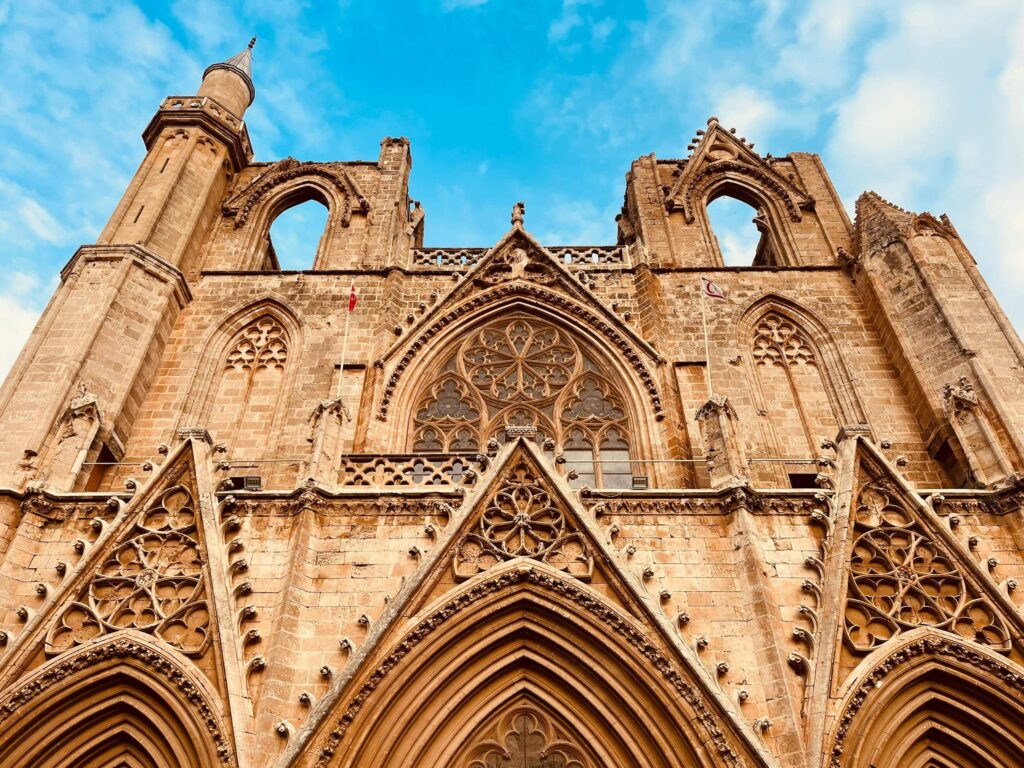Famagusta

Famagusta, known as Gazimağusa in Turkish, is one of the most captivating cities in North Cyprus. A place where time seems suspended, it offers an extraordinary concentration of historical landmarks, cultural heritage, and architectural marvels. Often shrouded in a quiet, mysterious aura, Famagusta invites visitors to walk through centuries — from the Bronze Age to the Venetian and Ottoman periods — within the walls of a single city.
The Ancient City of Salamis
Just outside modern Famagusta lie the majestic ruins of Salamis, once the capital of Ancient Cyprus and one of its most powerful city-kingdoms. With roots reaching back to the 11th century BC, Salamis presents an open-air museum of Hellenistic and Roman grandeur. Visitors can explore the Agora, Roman baths with mosaic floors, the Gymnasium, and Salamis Necropolis, along with the impressive Royal Tombs and the Basilica of St. Epiphanius — the largest basilica ever built in Cyprus.
Nearby stands the Campanopetra Basilica, another fine example of early Christian architecture, facing the sea and surrounded by remnants of an era when Cyprus was a center of faith and commerce.
Spiritual and Archaeological Treasures
Famagusta is a key stop for faith tourism, with the Monastery of St. Barnabas — dedicated to the island’s patron saint — serving as a major pilgrimage site. The former monastery now houses both the Icon Museum and the Archaeological Museum, showcasing religious art, sacred relics, and excavated artifacts that span millennia.
Just a short walk from the monastery, the ancient cities of Enkomi and Alasya offer insights into Cyprus’s Late Bronze Age prominence as a trading hub. Enkomi, believed by some to be the original site of Alashiya (the ancient name for Cyprus), was a wealthy city that traded copper with Egypt and the Near East.
The Walled City and Gothic Splendor
Within Famagusta’s fortified walls lies a treasure trove of medieval and Renaissance architecture. Dominating the city skyline is the Cathedral of St. Nicholas, constructed between 1298 and 1312. Once the coronation church for the Lusignan kings of Cyprus, it is a breathtaking example of French Gothic architecture. In the Ottoman period, it was converted into a mosque and renamed the Lala Mustafa Pasha Mosque, with the addition of a slender minaret that now stands in striking contrast to its Gothic facade.
Throughout the old city, history unfolds at every corner:
- The Othello Tower, a 15th-century Venetian stronghold, is said to have inspired Shakespeare’s famous tragedy and still retains its dramatic charm.
- The Twin Churches, once belonging to the Templars and Hospitallers, reflect the era of Crusaders.
- The Church of St. Peter and St. Paul (now the Sinan Pasha Mosque, or “Wheat Mosque”) is a fine example of late Lusignan architecture.
- The Venetian Palace (Plaza del Proveditore), built in 1522, was once the administrative heart of the city.
- Other highlights include the Latin and Greek Churches of St. George, the Nestorian Church, and the Cafer Pasha Baths, an elegant Ottoman hammam from the early 1600s.

Gates, Dungeons, and Literary Legends
Famagusta’s defensive system remains remarkably well preserved, with the Land Gate (Akkule or Ravelin) and the Sea Gate (Porta Del Mare) marking the main entrances through the walls. Between them lie cobbled streets, hidden courtyards, and stone arches that hint at the city’s layered past.
One of the most poignant landmarks is Namık Kemal’s dungeon — the prison where the famed Ottoman poet and playwright was held from 1873 to 1876 for his political writings. Today, it is a museum dedicated to his life and work.
Natural Wonders Nearby
Just beyond the city, visitors can explore İncirli Mağara (Fig Cave) — a natural wonder carved into limestone and filled with dramatic stalactites and stalagmites. It’s a refreshing detour from the stone and sun of the city’s architectural monuments.
Famagusta is not merely a city to visit — it’s a world to immerse yourself in.
With every archway, mosaic, and weathered stone, it reveals another layer of Cyprus’s story. Whether you’re a history enthusiast, a spiritual traveler, or a curious explorer, Famagusta offers a journey through time unlike any other.